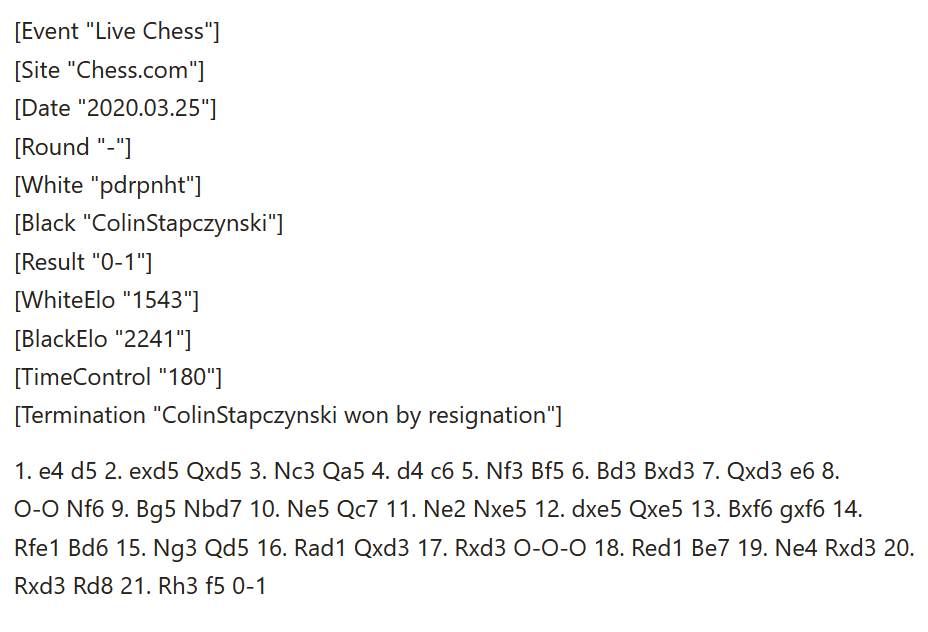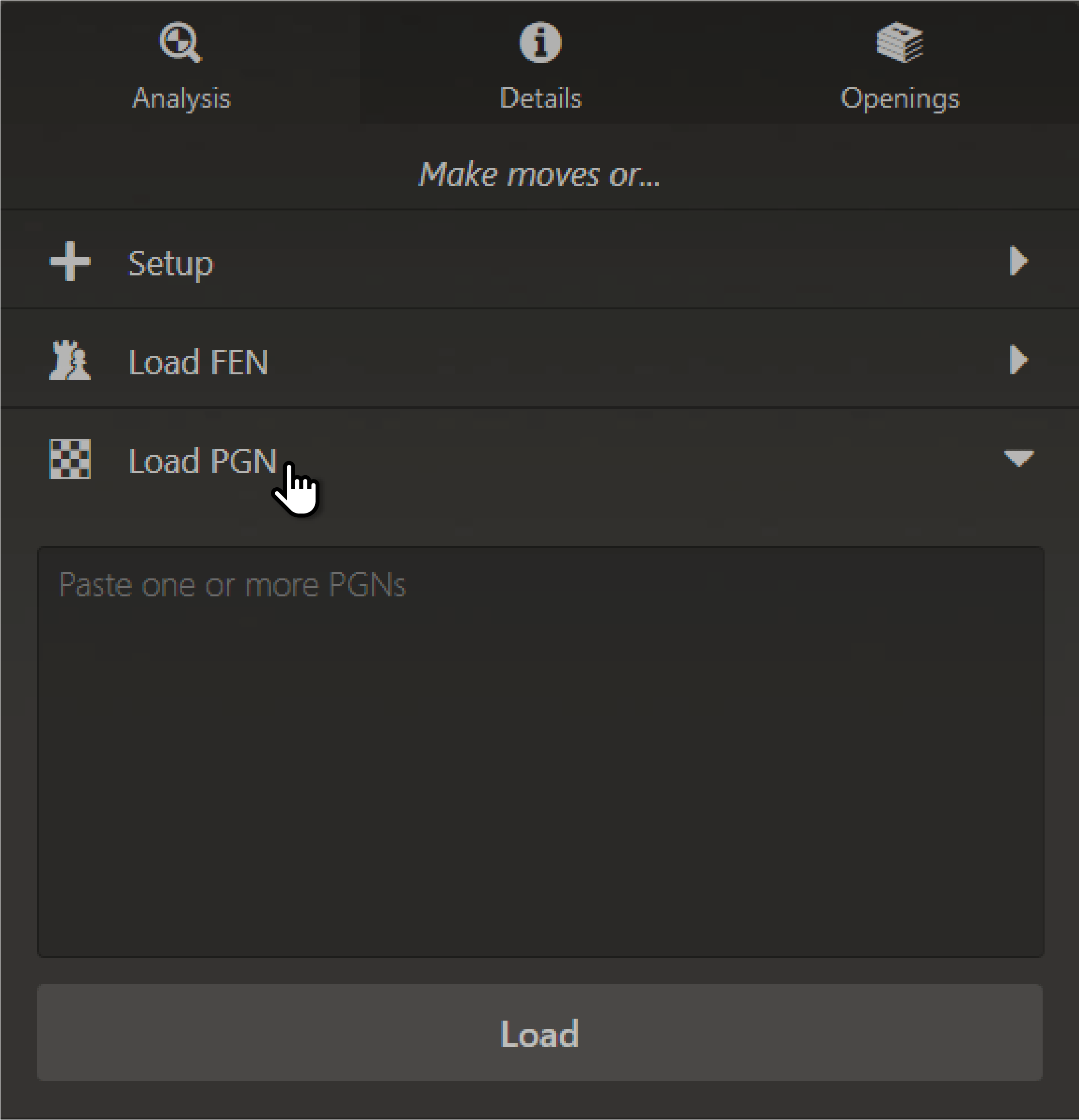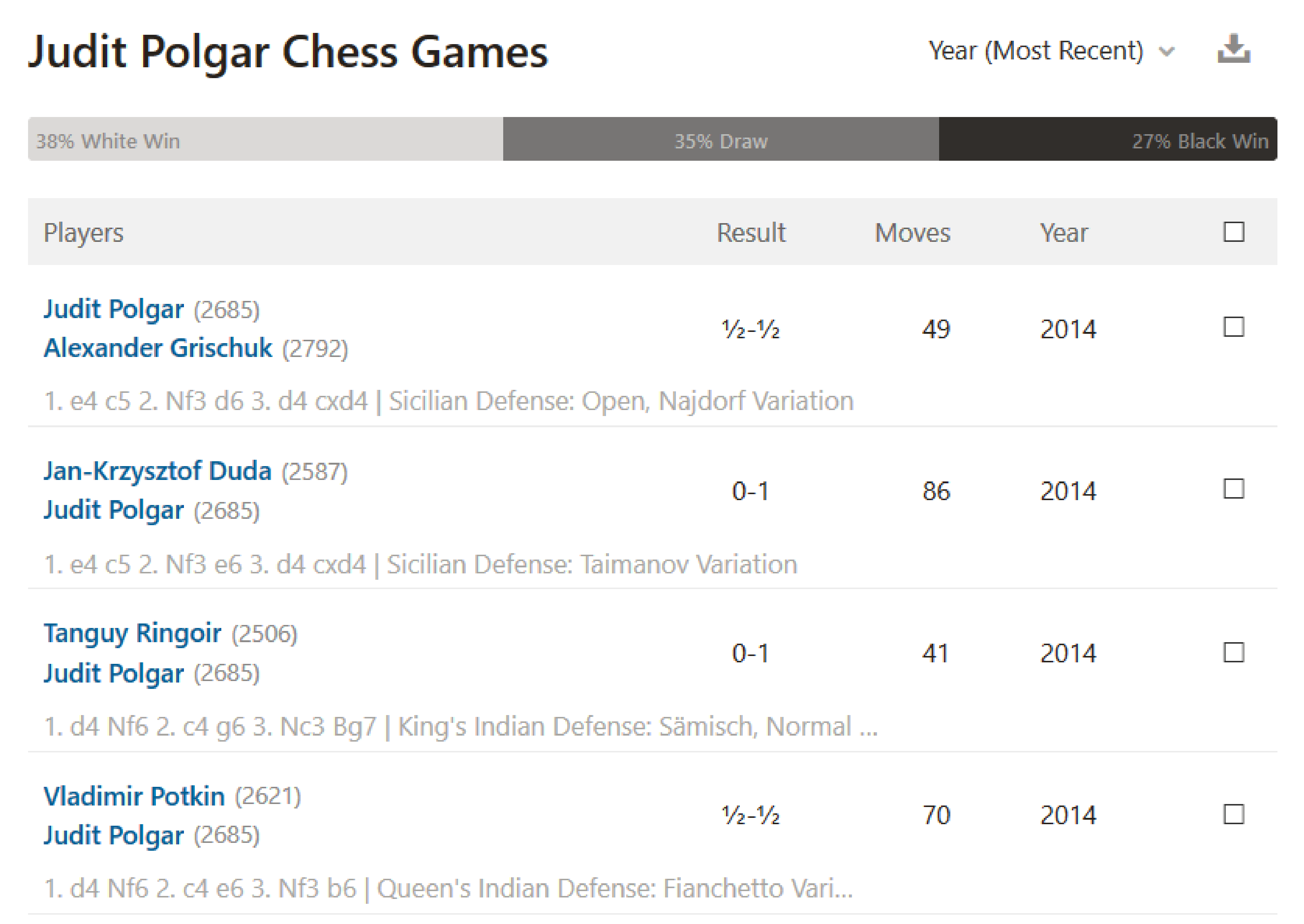
Portable Game Notation (PGN)
Can you imagine how hard it would be for you to record all of the moves from the games you played online? Fortunately, the PGN is a tool that makes that job very easy.
Here is what you need to know about the PGN:
- What Is PGN In Chess?
- Why Are PGNs Important?
- How Do PGNs Work?
- How To Use PGN On Chess.com
- Conclusion
What Is PGN In Chess?
PGN (short for Portable Game Notation) is the standard format for recording a game in a text file that is processible by computers. It was created by Steven J. Edwards, and most chess programs support it.
Different from the Forsyth-Edwards Notation (FEN), the PGN records the sequence of moves in a game and not just a particular position. Usually, the PGN contains one entire game, but it can also record just a fraction of a game.
The PGN also stores other information like the names of the players, the place where the game was played, the time control, the players' ratings, the game's result, and so on. Therefore, you can think of it as a chess score sheet that computers can read.

Why Are PGNs Important?
The PGN is a tool that allows players to replicate games easily using chess software. From that feature stems a series of benefits—the most obvious being the possibility of quickly loading games for analysis. They are also useful to share comments on games, programming chess software, and more.
Instead of having to read from a score sheet and moving the pieces on the board, players can load a PGN file and have the game pop up in the fraction of a second.
How Do PGNs Work?
PGN contains only ASCII characters so that computers can easily read them. There are two different sections inside a PGN, each with a different set of information.
The first section includes tag pairs, which record the following details:
- Event: The name of the event or match;
- Site: The location of the game;
- Date: The date when the game was played;
- Round: The specific round in which that game happened;
- White: The name of the player who had the white pieces;
- Black: The name of the player with the black pieces;
- Result: The outcome of the game.

This section can also contain extra fields with more data about the game like the Elo rating of the players, specifics about the way the game ended, and so on.
The second section of the PGN is the movetext, and it is where you find the sequence of moves played, comments, and the result of the game.
Moves are recorded in algebraic notation, and comments can be inserted after a ";" symbol or between parentheses or curly brackets.

If that sounds like a lot of work to keep track of, do not worry! Chess.com automatically handles all of the PGN creation as you are playing or analyzing a game.
How To Use PGN On Chess.com
Chess.com makes it very easy for you to import and export games using PGN. You can do that by heading over to the Analysis board. If you want to import a game, you only have to click Load PGN and paste its text into the specified field.

You can also export a PGN by clicking the Download or the Share button and selecting the PGN tab in the window that pops up.

You can also find the PGN of games you have played by going to your Archive page. Click on the desired game and then follow the same steps as before: click the Download button and go to the PGN tab.

Finally, you can also access the PGNs of millions of games that have been played by masters. Head over to the Master Games page, select the specific game you want, and access its PGN by clicking the Download or Share button.

Conclusion
You now know what a PGN is, how it works, and why it is useful. Now go to the Analysis board and import a game so you can learn from it!







